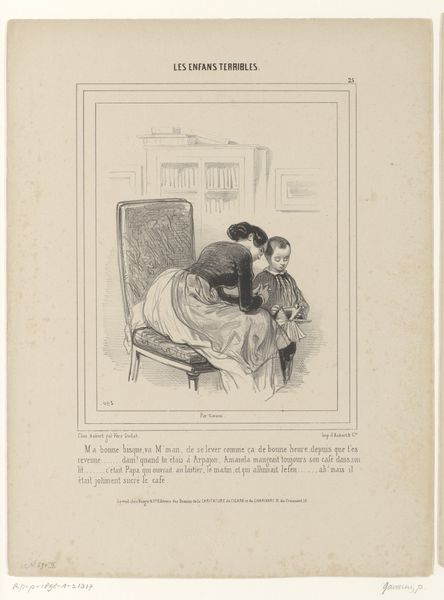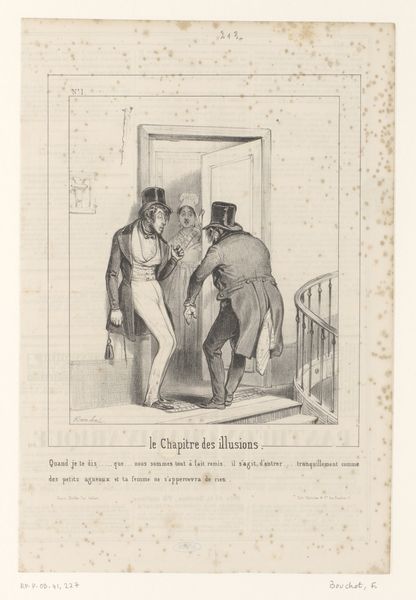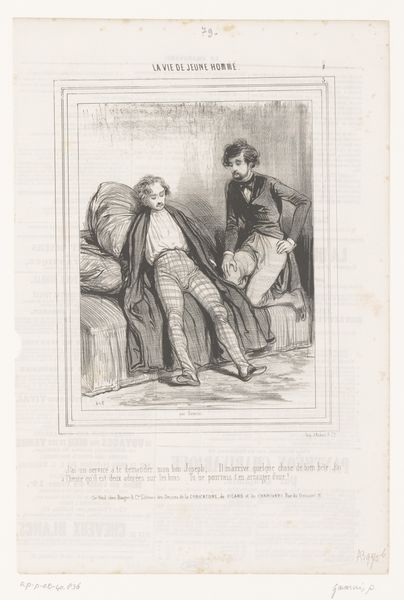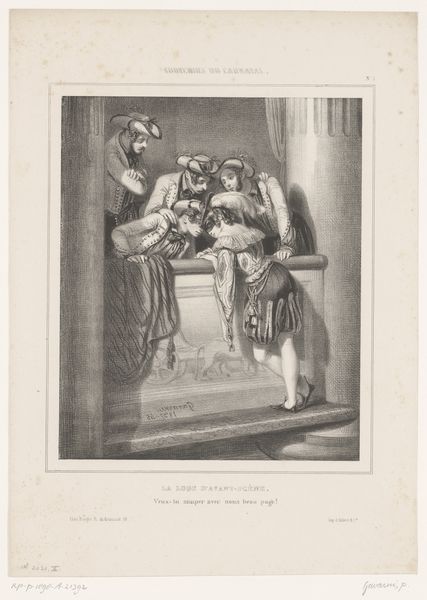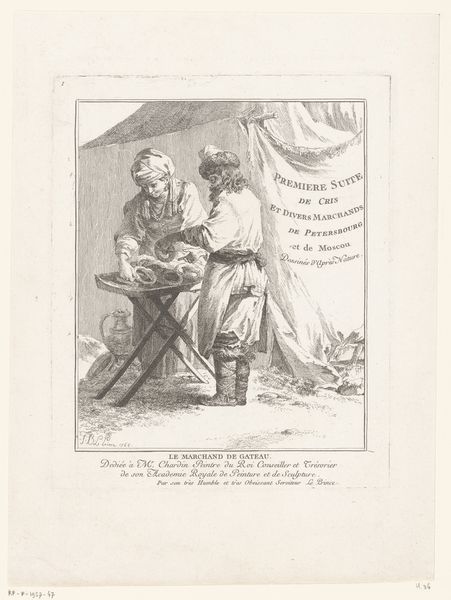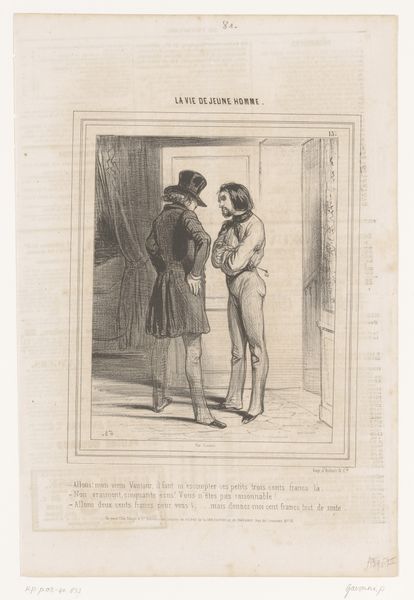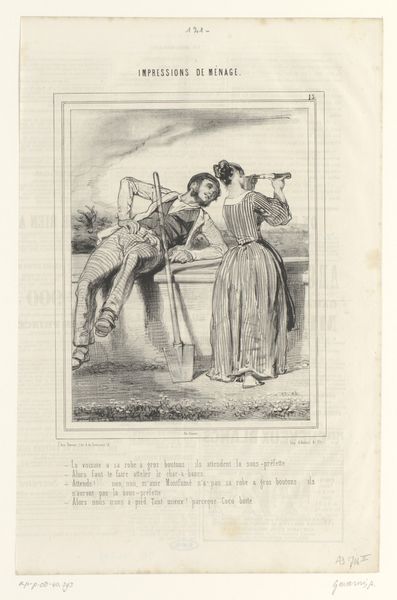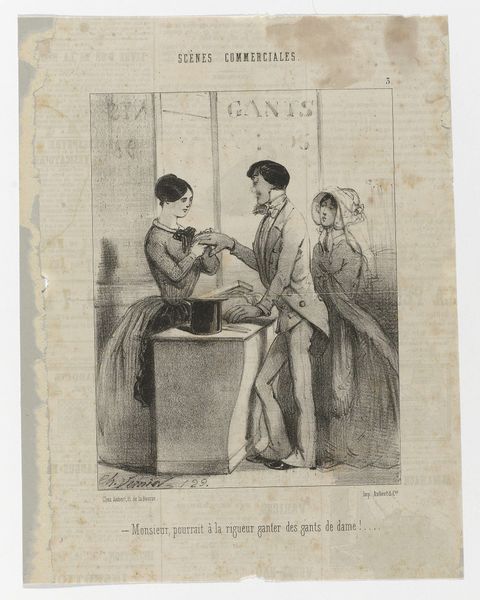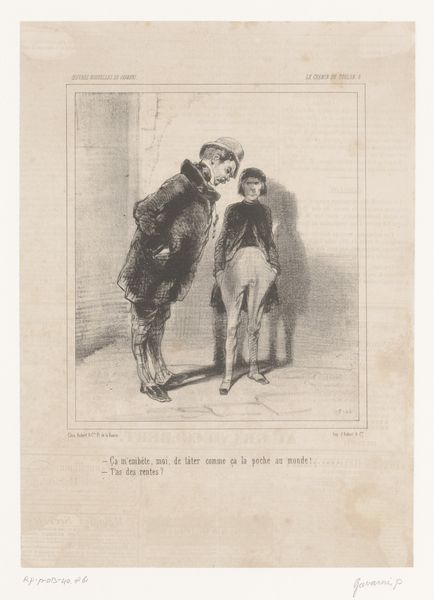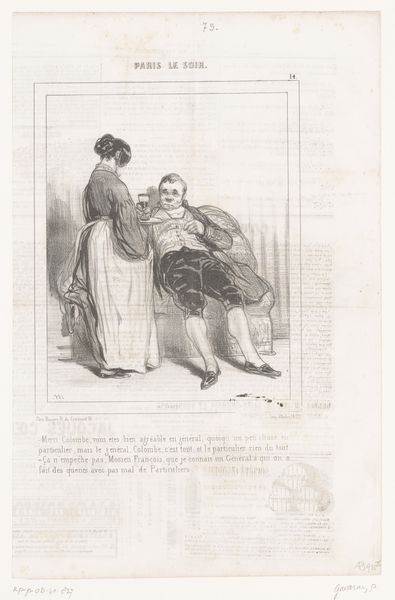
drawing, lithograph, print
#
drawing
#
lithograph
# print
#
caricature
#
pencil sketch
#
old engraving style
#
figuration
#
romanticism
Dimensions: height 363 mm, width 245 mm
Copyright: Rijks Museum: Open Domain
Editor: This lithograph by Edouard de Beaumont, made in 1843, is titled "Caricature of two men with a top hat." It has a very linear style. What strikes you about this print? Curator: I am intrigued by the stark contrast and the almost staged quality. This is not just a humorous drawing; it's a loaded commentary. Consider the title, “Civilization in the Marquesas Islands,” coupled with the figures presented. What symbols might these individuals represent to an audience of that time? Editor: Well, the top hats suggest European influence, and one figure seems to be indigenous. Is it about cultural exchange, or perhaps...something less celebratory? Curator: Precisely. Look closer. The indigenous man appears uncomfortable, almost coerced, while the other presents the hat with an air of...superiority? This dynamic taps into the psychological weight of colonialism, presenting a forced adoption of foreign customs. Note how Beaumont emphasizes the difference in their postures and expressions. Do you think that contrast is accidental? Editor: No, definitely deliberate. It’s uncomfortable to look at, honestly. The symbolism really brings out a darker subtext. Curator: And isn't that the power of an image? It allows cultural anxieties and power dynamics to surface, forcing us to confront a complex history through a deceptively simple scene. Think about the lasting power of such imagery – how these depictions influenced perception and policy. Editor: I see now. It’s not just a funny picture of hats; it’s a visual shorthand for a much larger, problematic narrative. Curator: Exactly! The image acts as a carrier for collective memories, triggering conversations about civilization, power, and the legacy of colonialism. Editor: I learned a lot about interpreting those non-obvious clues. Curator: Indeed. The language of images continues to shape how we perceive ourselves and others, which in turn, helps us better understand our world today.
Comments
No comments
Be the first to comment and join the conversation on the ultimate creative platform.


